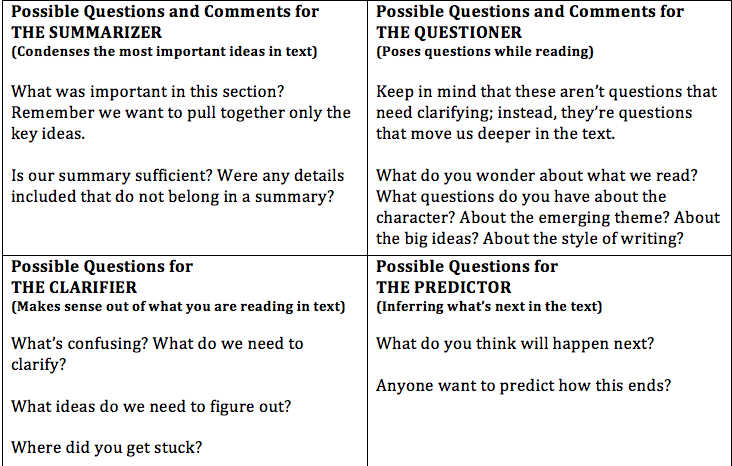We are moving into our next phase of argument practice in Social Studies. This section, Towards Revolution, is a series of Town Hall meetings during which students, taking on the role of Patriot, Loyalist, or Neutralist, debate whether the colonies should declare independence from Great Britain. We are drawing upon the work we did earlier with primary source documents (see previous posts from Dec. 6, 2014 and Jan. 10, 2015) and adding an explanation piece (see post from Feb. 22, 2014). The Town Hall meeting itself is a game-based version of Socratic Seminars from The Institute of Play called Socratic Smackdown. Here's how it goes:
- Students receive a role card briefly explaining their name, stance (Loyalist, Patriot, or Neutralist), and background (materials and lesson outline from "Towards Independence." United States Through Industrialism. Teacher's Curriculum Press, 2011). These are actual historical people, including John Adams, Benjamin Franklin, John Hutchinson, Joseph Brandt, and many others (including three women). Students are paired up, so the same role goes to two students. This is a scaffold, as well as a means to incorporate collaboration into the activity. Before the first Town Hall meeting, one student from each pair introduces him/herself to the group.
- Students build knowledge about a series of historical events. Town Hall meeting 1 focuses on The Proclamation of 1763, The Stamp Act, and the Quartering Act. Town Hall meeting 2 focuses on The Townshend Acts and The Boston Massacre. Town Hall meeting 3 focuses on The Intolerable Acts and The Boston Tea Party. And Town Hall meeting 4 focuses on the battles at Lexington and Concord.
- Students evaluate the series of events using evidence to support their opinions. My co-teacher and I noticed on our unit assessment that our students did not entirely understand the "Evidence/Rule/Conclusion" chart they used during the primary source work in December; specifically, they did not quote text or include specific details in the evidence column and they weren't sure what the difference was between Rule and Conclusion. We decided to switch it to a similar, but easier, chart: Say/Mean/Matter. This chart very specifically asks students to record what the text says (quote/detail), what it means (interpretation), and why it matters (significance). We used this new chart during The Great Awakening debate, and it proved to be much more successful than the Evidence/Rule/ Conclusion chart. For this activity, students will use Say/Mean/Matter to evaluate each event. For example, for Town Hall meeting 1, students will take The Proclamation of 1763 and Say what it is (a law that states colonists have to stay to the east and Native Americans to the west of the Appalachian mountains), what it Means (colonists will not be able to expand west into the Ohio and Mississippi river valleys, there will be less fighting between colonists and Native Americans, Native Americans keep the land on which they've lived for generations), and why it matters (this depends on the role, and students will decide whether this was fair or unfair and justify why). They will do the same for the other two Acts.
- Students are given the question: At this point in time, how should you and your fellow colonists respond to the British government: Comply (obey without question), Oppose (protest, even if unwilling to rebel), or Rebel (declare independence). They will use their evidence chart and role card to decide what to argue.
- Town Hall meeting (using Socratic Smackdown): The first partner brings the role card and evidence chart to the inside circle-- s/he is the speaker and will argue their position. The second partner sits in the outside circle with a score sheet. Listeners give speakers points based on speaking skills such as Agree/ Disagree (+1), Connect and Devil's Advocate (+2), and Interrupt (-1). As a scaffold, I will provide a sentence starter for the speakers: At this point in time, I think we should ______ (comply/oppose/rebel) because British Parliament's actions are _______ (fair/unfair). For example, (name Act, what it means, and why it is fair/unfair). In past years, I have found that students want to jump straight to the Acts without the explanation that makes their point clear. For example, one might say, "I think we should rebel because the Stamp Act was unfair." I provided a similar scaffold during The Great Awakening debate and it helped students structure and support their arguments much better. I am hoping that by repeating that structure over and over, they will get the language in their heads and it will appear in their argument writing later (fingers crossed).
- Reflect: Students in both the inner and outer circle reflect on the Town Hall meeting. Speakers consider points that other speakers made that they hadn't thought about, as well as what they could have done better. Listeners note points they could've made if they had been speakers as well as what the speakers did well or needed improvement. They can use the Explanation continuum to help them think through how well they were able to explain their thinking. A quick class discussion gets feedback to the speakers and alerts the listeners for what to do better when it is their turn to speak.
- Switch seats. The process repeats for the next Town Hall meeting, with the second partner as the speaker and the first partner as the listener.
By using the same strategies in different contexts, students learn to transfer skills. They will be holding another Document-Based debate in Social Studies in a few weeks. These argument skills will work there too. They are writing argument essays in Science this month. These argument skills will work there too. They will be writing position papers in English later in the school year. These argument skills will work there too. I hope that consistent practice will help them become masters of argument by the end of the year.





